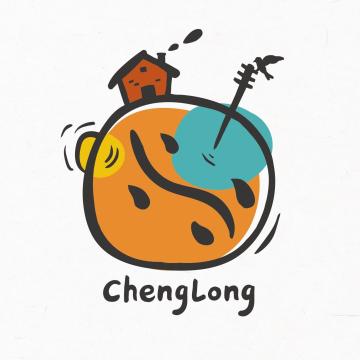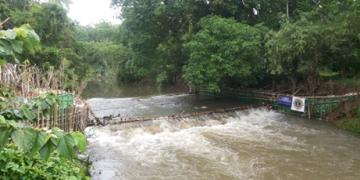
Promoting Satoumi Community Co-Management through Resilience Assessment: A Case Study of Chenglong Wetlands (Nantou, Taiwan)

Located along the western coast of Taiwan, Chenglong Wetlands was originally farmland. Since 1986, multiple typhoons have caused levee breaches and seawater intrusion, leading to farmland abandonment and its gradual transformation into grassy wetlands. Through joint efforts by the government, academia, civil groups, and local communities, the wetlands have been preserved as habitats, for water purification, and for disaster prevention. Environmental education and art have further revitalized community culture, creating a landscape that blends human and natural elements.
The Nantou Branch of the Forestry and Nature Conservation Agency introduced the concept of Socio-ecological Production Landscapes and Seascapes (SEPLS) and organized resilience assessment workshops (RAWs) centered on community residents. These workshops assessed environmental, economic, and social resilience, clarified key local issues, and explored ways for economic activity and ecological conservation to coexist, embodying the spirit of a Satoumi community.
Contexto
Défis à relever
(I) Environmental Aspects: 1. The landscape composition is relatively homogeneous, with limited diversity—there are no surrounding forests or low hills, resulting in low landscape diversity. The area also faces threats from invasive species such as Leucaena leucocephala, Parthenium hysterophorus , and Schinus terebinthifolia. 2. As local livelihoods mainly rely on aquaculture, fish and shrimp fry are typically purchased from external sources, leading to a lack of preservation and breeding of native species.
(II) Social and Economic Aspects: 1. Some public infrastructure developments (including utility poles and solar panels) are perceived as damaging to the ecological or scenic landscape . 2. There are frequent incidents of outsiders fishing in the community, yet currently, there are no regulations in place to manage or control these activities. 3. Tourist behavior during recreational visits—such as littering and trampling on habitats—has caused damage to the wetland landscape.
Ubicación
Procesar
Summary of the process
Located along the western coast of Taiwan, Chenglong Wetlands was originally farmland. Since 1986, multiple typhoons have caused levee breaches and seawater intrusion, leading to farmland abandonment and its gradual transformation into grassy wetlands. Through joint efforts by the government, academia, civil groups, and local communities, the wetlands have been preserved as habitats, for water purification, and for disaster prevention. Environmental education and art have further revitalized community culture, creating a landscape that blends human and natural elements.
The Nantou Branch of the Forestry and Nature Conservation Agency introduced the concept of Socio-ecological Production Landscapes and Seascapes (SEPLS) and organized resilience assessment workshops (RAWs) centered on community residents. These workshops assessed environmental, economic, and social resilience, clarified key local issues, and explored ways for economic activity and ecological conservation to coexist, embodying the spirit of a Satoumi community.
Impacts
The RAWs, engaging the SEPLS concept, led to community involvement and consensus through interaction and discussion. This has provided the locals with a deeper understanding of the key issues concerning their environment, economy, and society, helping to refine these issues for better alignment with relevant departments in order to collaboratively discuss task allocation and solutions. According to the results of the 2023 RAWs, waterlogging in the Wetlands has increased in recent years, leading to habitat loss for some waterbirds, a decline in rice fish populations in estuaries, and a weakening of the Wetlands’ ability to prevent disasters. Through cross-departmental and public-private collaboration, the Branch has promoted hydrological regulation in the Wetlands and the conservation of rice fish in estuarine areas. This includes testing measures such as lowering water levels, creating habitats, and conducting ecological monitoring and species surveys. The aim is to maintain the Wetlands’ biodiversity, enhance their ecological functions, and allow Satoumi communities to benefit from the Wetlands' disaster prevention and mitigation ecology. Additionally, the initiative seeks to promote ecotourism and foster eco-friendly industries to increase income, ultimately balancing human economic activities with ecological conservation.












